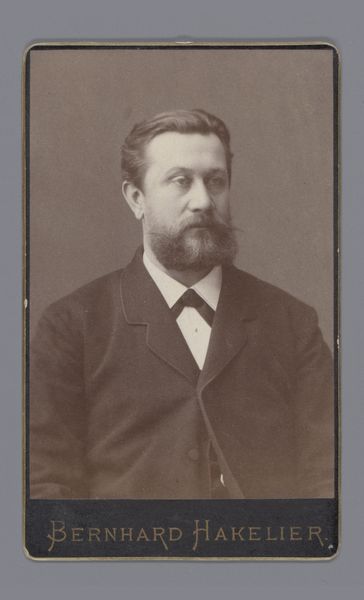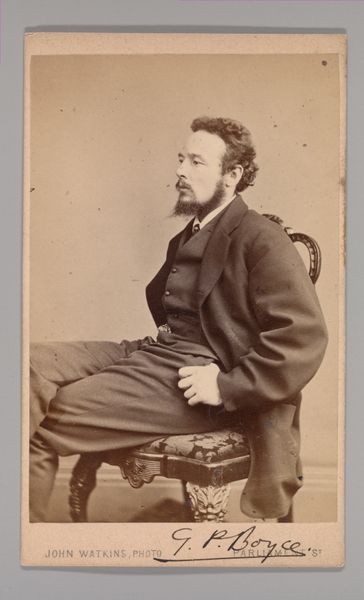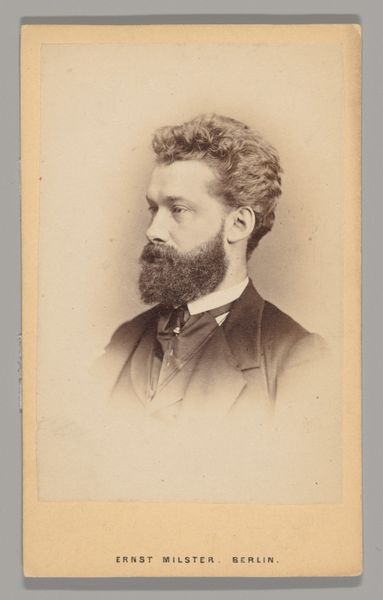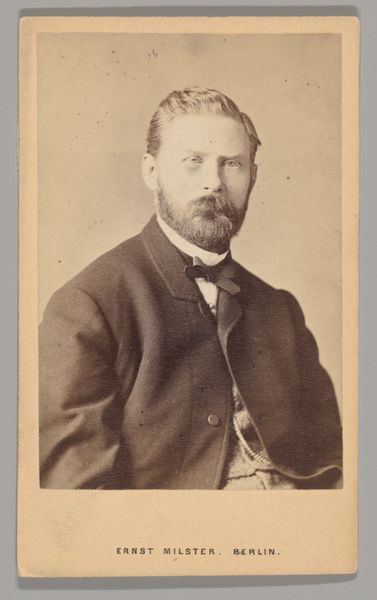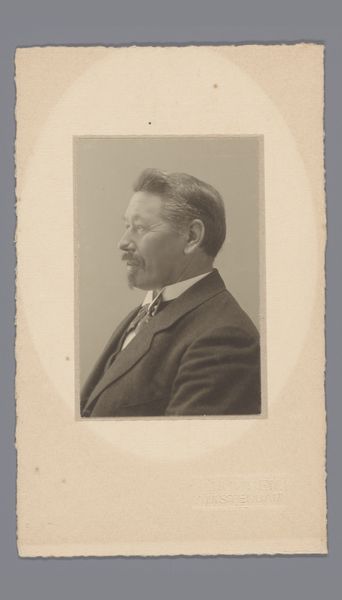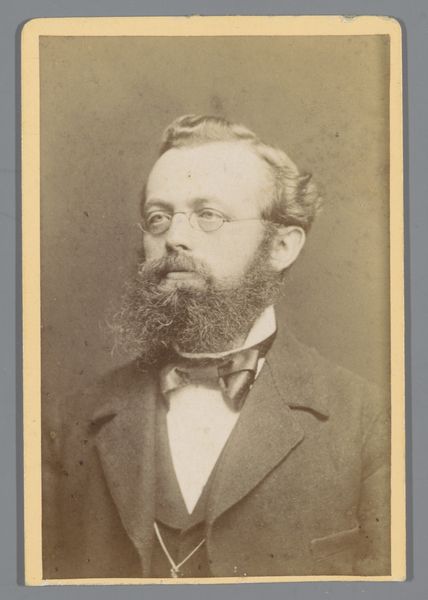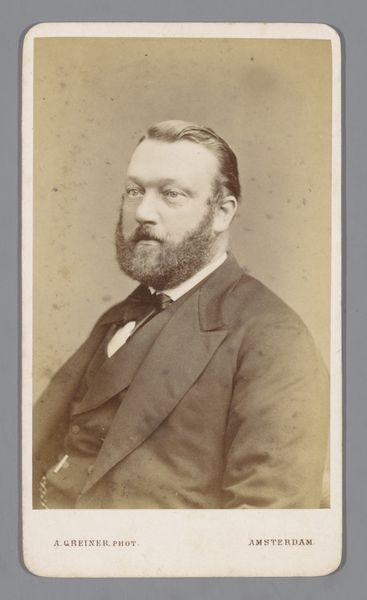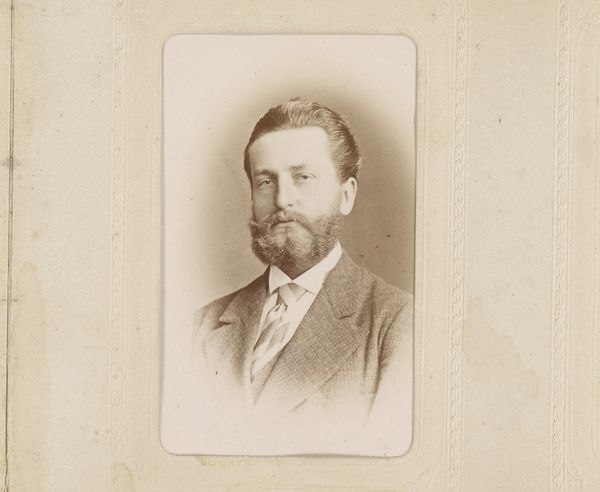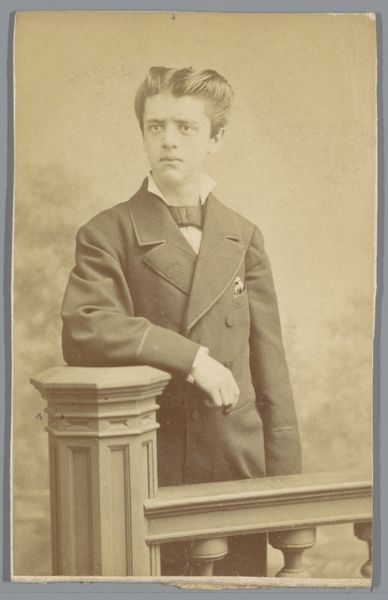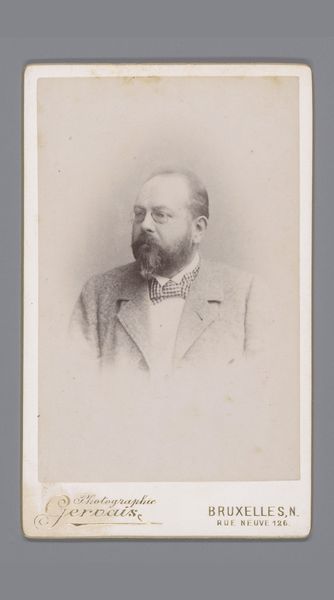
photography, gelatin-silver-print
#
portrait
#
photography
#
historical photography
#
gelatin-silver-print
#
realism
Dimensions: height 96 mm, width 65 mm
Copyright: Rijks Museum: Open Domain
Curator: Here we have an intriguing piece, a portrait of an unknown man, created sometime between 1855 and 1885 by Atelier Straus. It's a gelatin-silver print, showcasing a figure from a bygone era. Editor: My first impression is...melancholy. The sepia tones lend such a weight to his gaze. It's like he's seen a lot. There's a sense of quiet contemplation etched into the very fabric of the photograph. Curator: Absolutely. The process of gelatin-silver printing at that time required a mastery of chemical processes. This medium facilitated relatively high-volume portraiture but within strict social constraints and conventions around presentation. The clothing, the carefully groomed beard, even the slightly formal posture--they all signal a certain level of bourgeois aspiration. Editor: It's a manufactured image, no doubt. It's interesting to think about who got to participate in image-making. Still, even staged, these portraits give us these incredible clues about that moment, not just about the sitter, but about the aspirations around material presentation. Curator: Precisely! This particular gelatin-silver print serves as a tangible example of evolving class structures during a pivotal time in social history. We see photography enabling broader segments of the population to visualize and perform for the cameras the markers of a elevated social status through access to image production. Editor: It's strange how something that aims for such permanence can still feel so fragile. There’s also this weird connection to time: you look at this and you realize that his hopes and worries have turned to dust and our only memory is this perfectly composed photograph. I love that kind of visual paradox. Curator: In seeing this image, perhaps it makes one mindful of the role of labor, photographic equipment, darkroom processing techniques and societal conditions as they collectively shaped how this portrait could be produced, distributed and consumed at that moment in history. Editor: It makes me wonder if the subject had any clue he’d be gazed at and pondered over 150 years later.
Comments
No comments
Be the first to comment and join the conversation on the ultimate creative platform.
